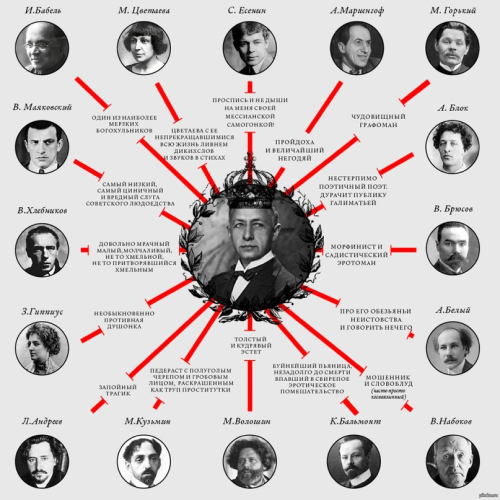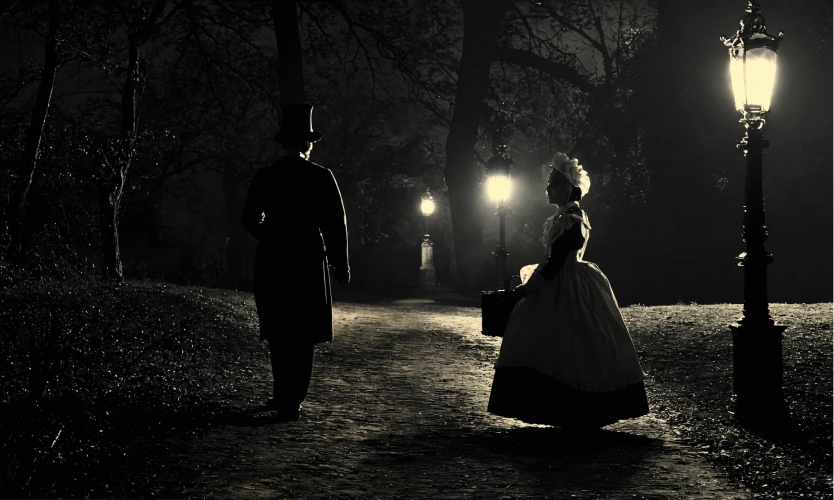The March literary salon was dedicated to the cycle of stories by I. Bunin, “Dark Alleys.”
It was not accidental that after discussing Nabokov’s works, we shifted to Bunin. These two prominent figures in classical Russian literature were creative rivals. While Nabokov was repeatedly nominated for the Nobel Prize, Bunin was the one who received it.
Initially, the relationship between Bunin and Nabokov wasn’t so hostile. Their correspondence was quite amicable. In the 1920s, Bunin was a living embodiment of Russian literature for young writers.
They started corresponding after Nabokov’s father, who was acquainted with Bunin, asked him to review his son’s poems. Bunin agreed, and from that moment on, the two writers—Nabokov as a novice and Bunin as a master—began their acquaintance.
After the publication of Nabokov’s first novel, “Mary,” the correspondence between the two writers continued. It’s worth noting that critics didn’t receive “Mary” very well, but they acknowledged the author’s potential. “The Defense” brought Nabokov fame, and Bunin realized he was dealing with a talented author. This marked the beginning of discord in their relationship.

С сайта Ревизор.ру
During conversations with third parties, Bunin increasingly criticized Nabokov and his literary style.
In January 1936, Bunin and Nabokov, already acquainted in person, met in Paris. Here’s what Nabokov wrote about this meeting: “When I met him in emigration, he had just received the Nobel Prize. He was preoccupied with the fluidity of time, old age, death—and he was pleased to note that he stood straighter than me, despite being thirty years older.” (From “Other Shores” by V. Nabokov)
As this phrase suggests, Nabokov didn’t hold the Nobel laureate in high regard.
It should be noted that Bunin didn’t hold back either. As indicated in Maxim Shrayer’s book “Bunin and Nabokov: A History of Rivalry,” Bunin wrote in his diary:
“V. V. Nabokov-Sirin wrote in English and published a book, on the cover of which, above his surname, for some reason, there is a royal crown. The book contains brief notes about emigrant writers he met in Paris in the thirties, and there is a page about me—wild and stupid lies, as if I somehow dragged him into some expensive Russian restaurant (with gypsies) to sit, drink, and talk to him, Nabokov, ‘heart to heart,’ as all Russians like to do, but he can’t stand it. It sounds very much like me! And I’ve never been to any restaurant with him.”
Bunin disliked the fact that Nabokov was becoming “more popular” than him, while Nabokov tried to prove that Bunin’s work had not influenced his own.
There’s an opinion that Nabokov’s popularity compelled Bunin to write “Dark Alleys,” which are recognized as a “gem” of his work.
Regardless, in this competition, we, the readers, emerged as the winners.
Though the story behind the creation of “Dark Alleys” is not so joyful. The cycle was written from 1937 to 1945. The first part was written in 1937, and the third was completed in 1945, with two more stories added later.

In 1940, Bunin, from Nazi-occupied Paris, moved to the town of Grasse, where he lived in poverty. He refused to publish his works with publishers collaborating with the occupation regime. Moreover, he harbored a Jewish person in his house.
Bunin described this period as follows: “We live poorly in Grasse, very poorly. Well, we eat frozen potatoes. Or water with something nasty floating in it, maybe some carrot. This is called soup… We live as a commune. Six people. And nobody has a penny to their name… One came to visit us for a day or two… It was three years ago. Since then, he has been living as a guest. And to be honest, he has nowhere to go: he’s a Jew. I can’t just throw him out…” (Sedykh A. Distant, Close. Moscow: Moscow Worker, 1995. P. 209. Quoted in: Letters of M.A. Osorgin / Published by G. Glushanok // New Journal. 2012. No. 268)
The writer’s wife, Vera Muromtseva-Bunina, wrote that the stories of “Dark Alleys” emerged partly because “during the war, we wanted to escape to another world, where there’s no bloodshed, no burning alive, and so on. We were all busy writing, and it helped us endure the unbearable.” Bunin later wrote on a copy of “Alleys” presented to Zinaida Shakhovskaya: “The Decameron was written during the plague.” (From the website Полка)

It’s worth noting that during the Soviet years, “Dark Alleys” were only partially published during the “thaw” years, and even then, not in full. The reception by critics was not unanimous. This is understandable, as there was no sex in the USSR, and “Dark Alleys” belong to sensual, erotic prose.
In our country, Bunin’s works were published in full only after 1986!
We have a complete collection of works by this great writer in our library. Come and read!
I would like to remind you that the next literary salon will be dedicated to the work of the Soviet science fiction writer Alexander Belyaev.


